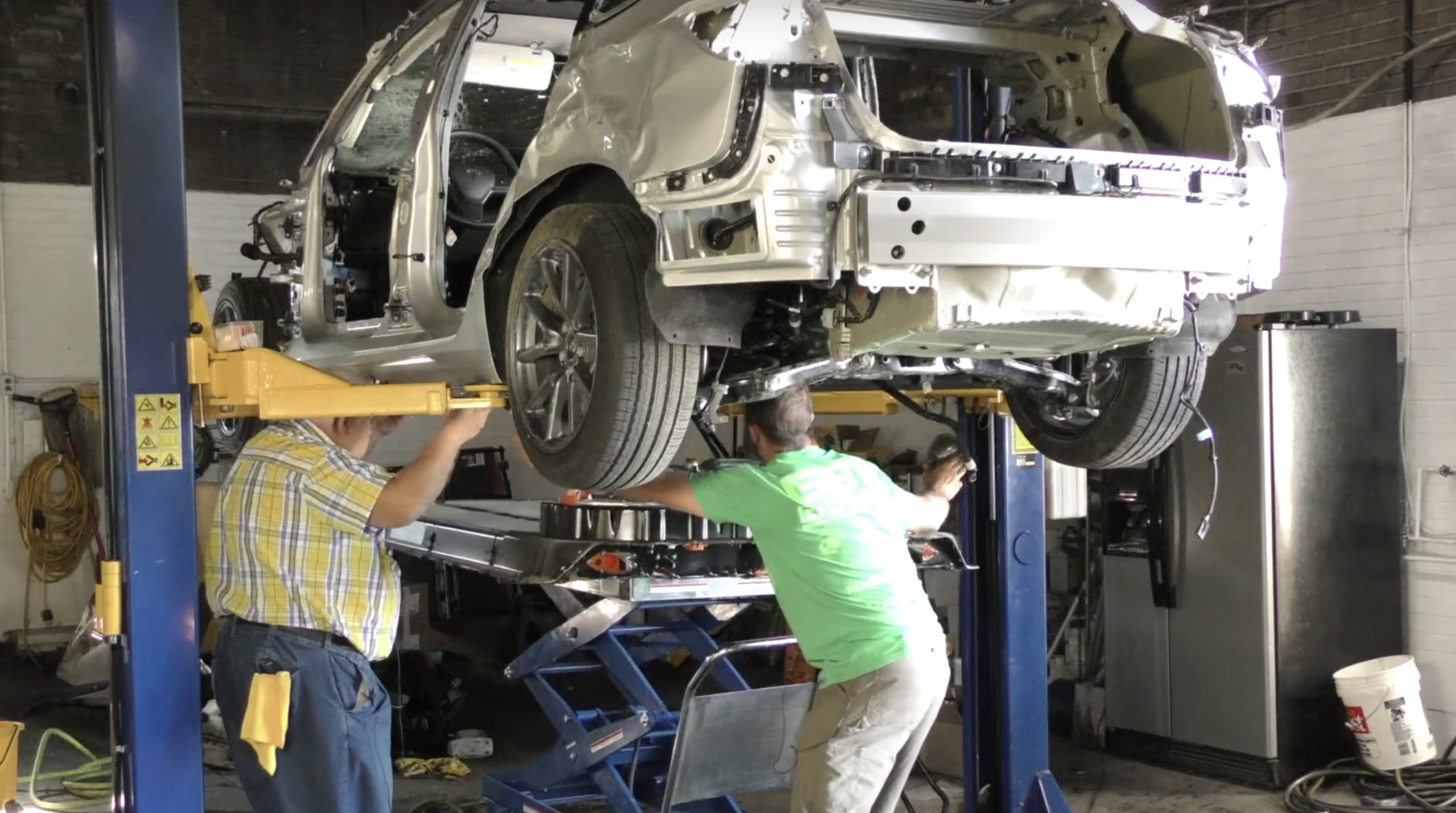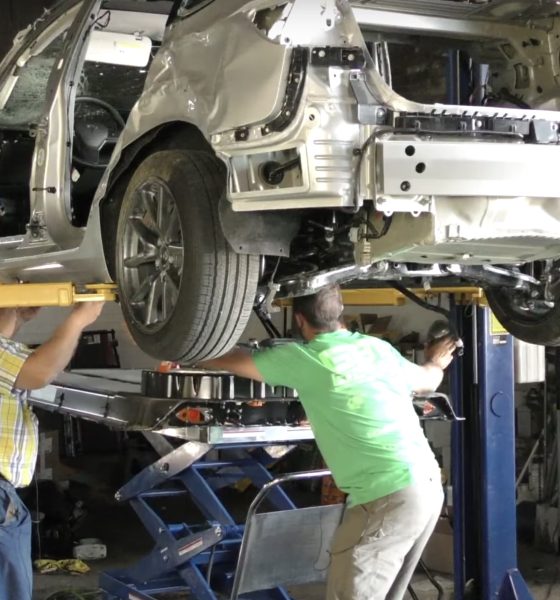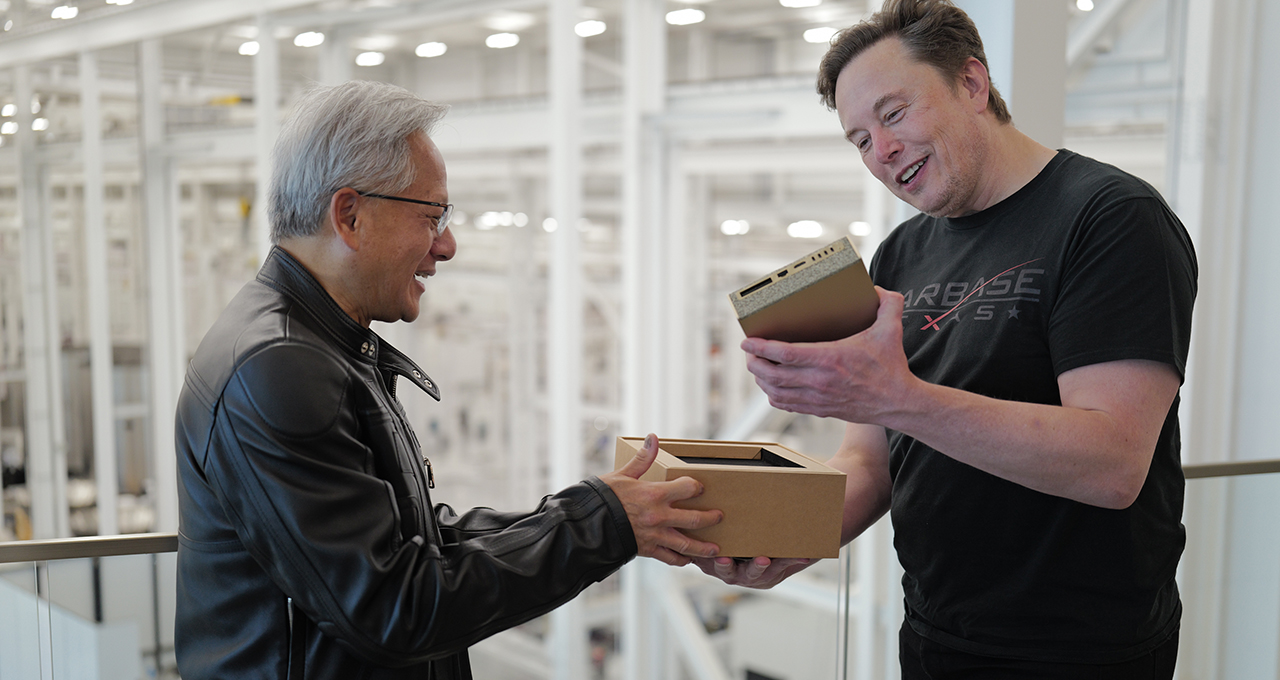

News
Tesla responds to Reuters’ claims of faulty suspension issues
Tesla has posted a rebuttal to a Reuters investigation which alleged that the company had been blaming drivers for alleged vehicle abuse despite knowing that its cars’ suspension components were faulty. The issue has caught the attention of many, including Democratic Senators Richard Blumenthal (D-Conn.) and Edward Markey (D-Mass.), both of whom have called on Tesla to initiate a recall about the reported issue.
Reuters‘ investigation indicated that Tesla had informed the NHTSA that frequent failures of components like its vehicles’ aft link were due to drive misuse. Despite this, the publication claimed that Tesla’s own engineers have tracked frequent failures of the components over the years. Tesla’s response, which was posted on X, provided a thorough rebuttal of the publication’s claims.
Tesla highlighted several issues with Reuters‘ investigation, such as its misleading headline and the lack of important context about the issue. The company also reiterated its service principles, which aim to provide the best support possible to its consumer base.
Reuters published an article that leads with a wildly misleading headline and is riddled with incomplete and demonstrably incorrect information.
This latest piece vaguely and nonsensically suggests there are thousands upon thousands of disgruntled Tesla customers. It’s…— Tesla (@Tesla) December 27, 2023
Following is Tesla’s response to Reuters‘ investigation.
Reuters published an article that leads with a wildly misleading headline and is riddled with incomplete and demonstrably incorrect information.
This latest piece vaguely and nonsensically suggests there are thousands upon thousands of disgruntled Tesla customers. It’s nonsensical because it’s nonfactual—the reality is Tesla’s customer retention is among the best and highest in the industry.
Misleading headline:
“Tesla blamed drivers for failures of parts it long knew were defective.”
Reality (buried in the article):
Tesla paid for most of the 120,000 vehicle repairs under warranty.
Manufactured story:
The customer photo represents not a failed component, but instead a post crash component that was damaged in the course of reducing the adverse effects of a collision. The customer was informed that Tesla was able to review the telemetry and understood there was a crash that resulted in this repair not being covered by warranty.
Most, if not all, manufacturer warranties exclude damages caused by a crash because that is the point of insurance coverage.
Helpful context:
Tesla has the most advanced vehicle telemetry system that can identify emerging issues, determine scope, and allow for faster vehicle and service improvements than has ever been seen in the auto industry. We take action as soon as we see a problem, something that should be celebrated as best-in-class, and is often cited by our regulators as a major safety advantage.
False accusation:
The author has conflated a noise-related (non-safety) issue with a range of unrelated and disconnected service actions. Contrary to the article’s statements based on erroneous data, Tesla is truthful and transparent with our safety regulators around the globe and any insinuation otherwise is plain wrong.
Tesla Service Principles:
a. Our service technicians and advisors diagnose, maintain and fix our customers’ cars efficiently and are not incentivized to profit off customers’ repair needs.
b. Tesla provides our service employees with excellent compensation and benefits packages. They don’t work off of commission like at other dealers who are incentivized to upsell or overcharge their customers.
c. The best service is no service. When service must be done, we fix 90%+ problems without even needing the customer present – either through over-the-air updates or with mobile service at a customer’s house or workplace.
To see Tesla’s approach in action, one can refer to this maintenance study from earlier this year, “Tesla was named the cheapest luxury car brand to maintain..” → https://autos.yahoo.com/tesla-named-cheapest-luxury-car-110000613.html
This cherry-picking approach to journalism results in missing the truth, which is a pattern in many of the negative articles about Tesla.
Using one customer’s one-sided version of events as the universal experience of all customers paints a false and misleading picture of Tesla. In reality, for every upset customer, there are hundreds more who are thrilled with their Tesla and eager to repeat their business. The numbers don’t lie in terms of repeat sales and customer satisfaction.
We strive to make every customer a lifelong member of the Tesla family.
While others may have their own agendas, our principles have been the same since the beginning: to make the safest cars in the world, which are easiest to maintain, while accelerating the world’s transition to sustainable energy.
Don’t hesitate to contact us with news tips. Just send a message to simon@teslarati.com to give us a heads up.

Elon Musk
NVIDIA CEO Jensen Huang commends Tesla’s Elon Musk for early belief
“And when I announced DGX-1, nobody in the world wanted it. I had no purchase orders, not one. Nobody wanted to buy it. Nobody wanted to be part of it, except for Elon.”

NVIDIA CEO Jensen Huang appeared on the Joe Rogan Experience podcast on Wednesday and commended Tesla CEO Elon Musk for his early belief in what is now the most valuable company in the world.
Huang and Musk are widely regarded as two of the greatest tech entrepreneurs of the modern era, with the two working in conjunction as NVIDIA’s chips are present in Tesla vehicles, particularly utilized for self-driving technology and data collection.
Nvidia CEO Jensen Huang regrets not investing more in Elon Musk’s xAI
Both CEOs defied all odds and created companies from virtually nothing. Musk joined Tesla in the early 2000s before the company had even established any plans to build a vehicle. Jensen created NVIDIA in the booth of a Denny’s restaurant, which has been memorialized with a plaque.
On the JRE episode, Rogan asked about Jensen’s relationship with Elon, to which the NVIDIA CEO said that Musk was there when nobody else was:
“I was lucky because I had known Elon Musk, and I helped him build the first computer for Model 3, the Model S, and when he wanted to start working on an autonomous vehicle. I helped him build the computer that went into the Model S AV system, his full self-driving system. We were basically the FSD computer version 1, and so we were already working together.
And when I announced DGX-1, nobody in the world wanted it. I had no purchase orders, not one. Nobody wanted to buy it. Nobody wanted to be part of it, except for Elon.
He goes ‘You know what, I have a company that could really use this.’ I said, Wow, my first customer. And he goes, it’s an AI company, and it’s a nonprofit and and we could really use one of these supercomputers. I boxed one up, I drove it up to San Francisco, and I delivered it to the Elon in 2016.”
The first DGX-1 AI supercomputer was delivered personally to Musk when he was with OpenAI, which provided crucial early compute power for AI research, accelerating breakthroughs in machine learning that underpin modern tools like ChatGPT.
Tesla’s Nvidia purchases could reach $4 billion this year: Musk
The long-term alliance between NVIDIA and Tesla has driven over $2 trillion in the company’s market value since 2016.
Elon Musk
GM CEO Mary Barra says she told Biden to give Tesla and Musk EV credit
“He was crediting me, and I said, ‘Actually, I think a lot of that credit goes to Elon and Tesla…You know me, Andrew. I don’t want to take credit for things.”

General Motors CEO Mary Barra said in a new interview on Wednesday that she told President Joe Biden to credit Tesla and its CEO, Elon Musk, for the widespread electric vehicle transition.
She said she told Biden this after the former President credited her and GM for leading EV efforts in the United States.
During an interview at the New York Times Dealbook Summit with Andrew Ross Sorkin, Barra said she told Biden that crediting her was essentially a mistake, and that Musk and Tesla should have been explicitly mentioned (via Business Insider):
“He was crediting me, and I said, ‘Actually, I think a lot of that credit goes to Elon and Tesla…You know me, Andrew. I don’t want to take credit for things.”
GM CEO Mary Barra said to Andrew Sorkin at the New York Times Dealbook Summit that she pulled President Biden aside and said Tesla CEO @elonmusk deserved the credit for EVs:
“He was crediting me, and I said, ‘Actually, I think a lot of that credit goes to Elon and Tesla,'” Barra… pic.twitter.com/OHBTG1QfbJ
— TESLARATI (@Teslarati) December 3, 2025
Back in 2021, President Biden visited GM’s “Factory Zero” plant in Detroit, which was the centerpiece of the company’s massive transition to EVs. The former President went on to discuss the EV industry, and claimed that GM and Barra were the true leaders who caused the change:
“In the auto industry, Detroit is leading the world in electric vehicles. You know how critical it is? Mary, I remember talking to you way back in January about the need for America to lead in electric vehicles. I can remember your dramatic announcement that by 2035, GM would be 100% electric. You changed the whole story, Mary. You did, Mary. You electrified the entire automotive industry. I’m serious. You led, and it matters.”
People were baffled by the President’s decision to highlight GM and Barra, and not Tesla and Musk, who truly started the transition to EVs. GM, Ford, and many other companies only followed in the footsteps of Tesla after it started to take market share from them.
Elon Musk and Tesla try to save legacy automakers from Déjà vu
Musk would eventually go on to talk about Biden’s words later on:
“They have so much power over the White House that they can exclude Tesla from an EV Summit. And, in case the first thing, in case that wasn’t enough, then you have President Biden with Mary Barra at a subsequent event, congratulating Mary for having led the EV revolution.”
In Q4 2021, which was shortly after Biden’s comments, Tesla delivered 300,000 EVs. GM delivered just 26.
News
Tesla Full Self-Driving shows confident navigation in heavy snow
So far, from what we’ve seen, snow has not been a huge issue for the most recent Full Self-Driving release. It seems to be acting confidently and handling even snow-covered roads with relative ease.

Tesla Full Self-Driving is getting its first taste of Winter weather for late 2025, as snow is starting to fall all across the United States.
The suite has been vastly improved after Tesla released v14 to many owners with capable hardware, and driving performance, along with overall behavior, has really been something to admire. This is by far the best version of FSD Tesla has ever released, and although there are a handful of regressions with each subsequent release, they are usually cleared up within a week or two.
Tesla is releasing a modified version of FSD v14 for Hardware 3 owners: here’s when
However, adverse weather conditions are something that Tesla will have to confront, as heavy rain, snow, and other interesting situations are bound to occur. In order for the vehicles to be fully autonomous, they will have to go through these scenarios safely and accurately.
One big issue I’ve had, especially in heavy rain, is that the camera vision might be obstructed, which will display messages that certain features’ performance might be degraded.
So far, from what we’ve seen, snow has not been a huge issue for the most recent Full Self-Driving release. It seems to be acting confidently and handling even snow-covered roads with relative ease:
FSD 14.1.4 snow storm Ontario Canada pic.twitter.com/jwK1dLYT0w
— Everything AI (@mrteslaspace) November 17, 2025
I found the steepest, unplowed hill in my area and tested the following:
• FSD 14.2.1 on summer tires
• FSD 14.2.1 on winter tires
• Manual drivingBut I think the most impressive part was how FSD went DOWN the hill. FSD in the snow is sublime $TSLA pic.twitter.com/YMcN7Br3PU
— Dillon Loomis (@DillonLoomis) December 2, 2025
Well.. I couldn’t let the boys have all the fun!
Threw the GoPro up and decided to FSD v14.2.1 in the snow. Roads were not compacted like the other day, a little slippery, but overall doable at lower speeds. Enjoy the video and holiday music 🎶
Liked:
Took turns super slow… pic.twitter.com/rIAIeh3Zu3— 🦋Diana🦋 (@99_Colorado) December 3, 2025
Moving into the winter months, it will be very interesting to see how FSD handles even more concerning conditions, especially with black ice, freezing rain and snow mix, and other things that happen during colder conditions.
We are excited to test it ourselves, but I am waiting for heavy snowfall to make it to Pennsylvania so I can truly push it to the limit.








